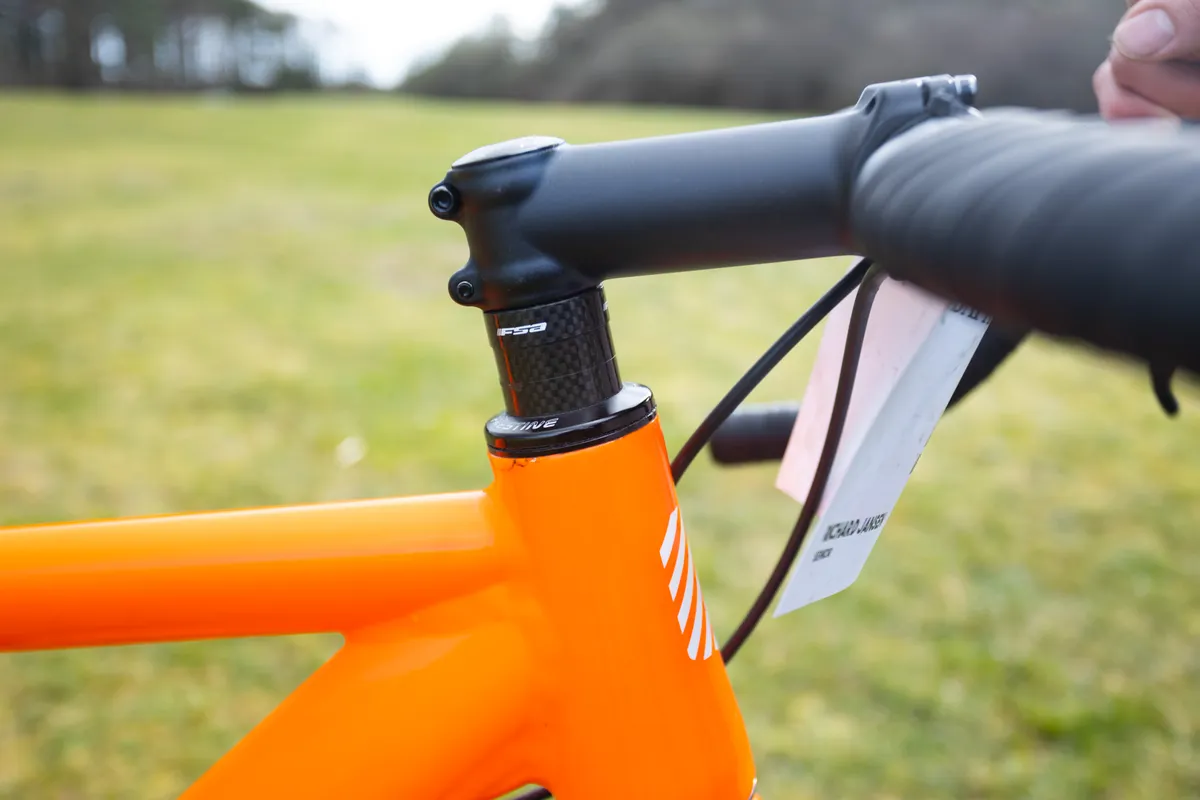The UCI should allow the separation of pro-race bikes from mass-market bikes. The pros would get better-suited bikes and so would we.
If brands could build bikes to suit the specific needs of their pro riders, we’d see better, faster bikes in the pro tour – and much more practical bikes for the rest of us.
It’d be the end of ridiculously long stems in the pro peloton, odd builds and all the weird spec compromises we see in an attempt to get bikes to fit the pros.
If the UCI would just relax its rules, it would be a win-win for professional and amateur riders alike.
Cooler racing on faster bikes

Wouldn’t bike racing be cooler if the tech model were more akin to Formula One rather than stock car racing?
At the minute, even the most dedicated race machine is compromised by the need for it to be a workable bike in the real world.

For example, would Specialized have cancelled the Venge Vias if it was only for the pro tour and not influenced by the pushback from shop mechanics saying it took too long to build, eroding profit margins and making it too expensive to maintain for the end user?
You don’t see anyone in the design teams of Formula One or MotoGP hand-wringing about practicality over speed.
Practical performance for race bike fans

The flipside is also true; a lot of pro race bikes look inviting but don’t have the tyre clearance we’d prefer.
I’d also like my race-shaped bike to have down-tube storage, but that won’t happen because it would add too much weight.
If, like me, you live in the UK, a stripped-down race bike is fun to ride, but it's impractical for a quarter of the year because you can’t fit proper mudguards. Clip-ons are good, but they are a compromise.

Plus, let’s face it: super-slammed ride positions only really work for the most elite (and younger, more flexible) riders, so having ‘pro’ geometry simply means compromising the design of the bike.
How many super-slammed race bikes have you seen out on the roads or in a sportive with a stack of spacers that looks more like a Pringles can than something you'd find on a slinky racer?

Trek used to offer its top-end road bikes in three fits: H3, H2 and the pro-only H1. I’d love to see that approach make a return.
Now Trek’s fit is effectively H1.5, not exactly as slammed as some elite racers desire, but not quite the fit that’s optimal for most riders. All race bike geometry is this way.
Love race bikes, hate the impractical ownership

Now, don’t get me wrong, I love a race bike; I’m the proud owner of a Giant TCR, Cannondale SuperSix Evo and a Specialized Tarmac, all of different vintages (did I mention I have a bike addiction?).
All are absolute stonewall classics of the genre. Still, though, everything would be improved for my needs with some simple tweaks.
Down-tube storage would stop me from giving up a water bottle slot for a tool can or, even worse, ruining the lines of these slinky speedsters with ugly, ungainly saddle bags. Mudguards, as I’ve mentioned, would enable me to ride these bikes more when the weather turns foul.
We could have simplified standards and universal fittings, leaving the pro-specials to have short-run specialist parts. That way, standards could be tested in the racing world before being rolled out, rather than having us do the long-term in-field testing R&D work.
As things stand

To quote the current regulations: "The UCI Regulations assert the primacy of man over machine. Observance of the regulations by all parties involved facilitates sporting fairness and safety during competition."
That all sounds egalitarian and fair, but is it really? Each bike manufacturer tries its hardest to make a better, faster and more efficient bike than the competition – all to give its riders the edge.
If the UCI’s ideals were strictly adhered to, the pro tour would see all the competitors riding neutral service bikes. On the track, everyone would be riding skinny steel fixed-gear bikes. Patently, no one is; even the sporting ideal that is the Olympic Games is a technical arms race for the richest nations.
The rules are already bent to near breaking point. Sagan, Backstedt, Boonen and others all rode 'non-standard' custom bikes in the biggest races. Let's just make the ruling broader to stop any questions before they start.
The stats don’t make business sense

People who cycle more than once a week in the UK number 7.4 million. British Cycling membership is 128,663, which comes with a provisional racing license, although exact numbers aren’t published on race participation.
In the USA, it’s a similar situation; 54.7 million are said to participate in cycling. USAC, the governing body for bicycle racing, has issued 75,000 licenses according to the latest available data – that’s across track, BMX, mountain biking, cyclocross, para cycling, and road racing.
Even with the most generous of analyses, that means 0.14% of USA cyclists and 1.74% of cyclists in the UK race.
Of course, just because you don’t race it doesn’t exclude you from wanting to own or ride a proper race bike.
I can see that investment in making bikes just for pros might not seem the smartest business decision. However, I’d counter that I think it’d make a lot more sense because the big brands are already sort of trying to sell us that.
Elite editions and real-world rigs

The high end of road bike lines is littered with superbikes separated from the standard range. It's these that the pros ride now.
I’m talking S-Works (Specialized), SLR (Trek and BMC), LAB71 (Cannondale), CFR (Canyon), (Colnago) RS, and Cervélo’s with a 5 after their name. Imagine a world where these bikes weren’t just a tad different under the skin, with more emphasis on higher grades and more high-mod carbon (for lighter weight and greater stiffness).

What if these bikes were even more stripped-down and more aero, with more race-optimised geometry and built to fit individual riders?
It’d require the UCI to change some rules – the main one being the 6.8kg weight limit.
It makes no sense to apply a weight limit to a bike when professionals can be of such different shapes.
Legendary powerhouse and 2004 Paris-Roubaix winner Magnus Backstedt holds the record as the heaviest rider in Tour de France history at 95kg.

The lightest recorded winner of the Tour, Luis Ocaña, weighed only 52kg. If both were racing this year, they’d effectively be riding bikes of the same weight.
Real Pro editions

Of course, these optimised pro-edition bikes could still be sold in limited numbers for those who really want them.
It would be similar to supercars – let’s face it: a standard Porsche 911 is more than fast enough for any of us, although Porsche still sells limited numbers of the race-prepped GT3 R.
Ferrari has Competizione versions of its road-going machines, but it doesn't mean the standard models are lesser. They just have practical features such as soundproofing, air conditioning and more comfortable seats. That’s the kind of thinking I want for road race bikes for all parties.
The ‘standard’ models could be more practical for us: down-tube storage, practical fittings for mudguards and top tube feed bags.
Less emphasis on pro-aero optimisation, such as full cable/hose integration, would result in bikes just as performance-orientated but with increased practicality for those of us who have to maintain our bikes without a team to do it for us.
I want to see pro tour bikes allowed to have watt-shaving tweaks, such as cowled cranks, narrow bars (even though I find them offensive to ride with), angled shifters, non-standard geometry, 3D-printed custom parts, and no limits on making riders faster.

Less restricted innovation will lead to more innovation.
In conclusion, the UCI’s ideals are noble, but they’re not rooted in the present reality of any racing discipline on the road or off it.
Unleash the designers and engineers to fulfil their ambitions and we’ll all benefit in the long run.



